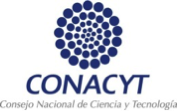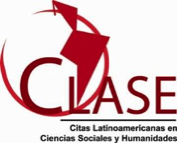Design and Evaluation of Biosensor Prototypes as a System to Detect Microbiological Risks for Organic Collections in Storage
DOI:
https://doi.org/10.30763/Intervencion.288.v2n28.67.2023Keywords:
air, storage, biosensors, collections, organic materials, microorganismosAbstract
This RESEARCH addressed the implementation of biosensor prototypes to detect microbiological risks in environments with organic collections. During the first phase, different combinations of supports, culture mediums, and pH indicators were tested in order to design the prototypes in the laboratory, while the second phase saw the prototypes tested in collection storage environments. The best prototypes were chosen during the experimental phase, taking into account the criteria of colony forming-unit (CFU), amount of CFU in the biosensors, and the diversity of isolated fungi. During the second phase, it was possible to conclude that environmental conditions are determining factors for the prototypes’ functionality.
Downloads
References
Arora, M. (2013). Cell culture media: a review. Mater Methods, 3(175),1-29. doi: https://doi.org/10.13070/mm.en.3.175
Assis, T., Pawlak, J., Pal, L., Jameel, H., Reisinger, L. W., Kavalew, D., Camp bell, C., Pawlowska, L. y Gonzalez, R. W. (2020). Comparison between uncreped and creped handsheets on tissue paper properties using a creping simulator unit. Cellulose, 27, 5981–5999.
Barde, M. P. y Barde, P. J. (2012). What to use to express the variability of data: Standard deviation or standard error of mean? Perspectives in Clinical Research, 3(3), 113-116. doi: https://doi.org/10.4103/2229-3485.100662
Barnett, L. y Hunter, B. (1998). Illustrated genera of imperfect fungi. The American Phytopathological Society Press.
Borrego, S. F., Herrera, O. y Paneque, I. (2021). Calidad micológica ambiental en archivos cubanos y su impacto en la salud del personal. Anales de la Academia de Ciencias de Cuba, 11(3), 1-17. http://scielo.sld.cu/scielo.php?script=sci_arttext&pid=S2304-01062021000300023
Borrego, S. F., Perdomo, I., Guiamet, P. y Gómez de Saravia, S. (2010). Estudio de la concentración microbiana en el aire de depósitos del Archivo Nacional de Cuba. Augmdomus, 1, 118-137. https://revistas.unlp.edu.ar/domus/article/view/97/117
Cepeda, R., Luque, L., Ramírez, D., Franco, P. y Fabra, M. (2019). Monitoreo de hongos ambientales en laboratorios y reservas patrimoniales bioarqueológicas. Boletín Micológico, 34(2), 33-49. doi: https://doi.org/10.22370/bolmicol.2019.34.2.1909
Franco, A. E., Cepero, M. C., Cárdenas, M. E., Estupiñán, N. y Restrepo, S. (2012). Biología de hongos. Universidad de los Andes.
Gacto, M. y Gacto, M. (2011). Los microorganismos y el arte. Anales de Biología, 33, 107-115. https://www.um.es/analesdebiologia/numeros/33/PDF/33_2011_13.pdf
González, C., Acevedo, N., Cases, B. y Valenzuela, G. (2016). Tejidos para la muerte: análisis textil y egiptológico de vendajes funerarios del Museo Nacional de Historia Natural. Universum, 31(1), 173-189. doi: http://dx.doi.org/10.4067/S0718-23762016000100011
Guinea J., Peláez, T., Alcalá, L. y Bouza, E. (2005). Evaluation of Czapeck agar and Sabouraud dextrose agar for the culture of airborne Aspergillus conidia. Diagnostic Microbiology and Infectious Disease, 53(4), 333-334. doi: https://doi.org/10.1016/j.diagmicrobio.2005.07.002
Khan, H. A, A. y Karuppayil, S. M. (2012). Fungal pollution of indoor environments and its management. Saudi Journal of Biological Sciences, 19(4), 405-426. doi: https://doi.org/10.1016/j.sjbs.2012.06.002
Lasprilla Rosero, L., Forero Lizarazo, L. M., Bernal Gómez, C. M., Alba Álvaro, W. R., Torres Landínez, A. Y., López Lagos, M. I., Vega Acosta, N. L., Rivera Zavala, J. C., Buitrago-Hernández, S. M., Suárez Díaz, H. A., Ortegón Meneses, L. A. y Tamayo Díaz, E. R. (2014). Identificación de agentes contaminantes de la colección del herbario de la Universidad Pedagógica y Tecnológica de Colombia, Tunja (Boyacá-Colombia). Conexión Agropecuaria JDC, 4(2), 25-44. https://revista.jdc.edu.co/index.php/conexagro/article/view/207
Lee, D., In, J. y Lee, S. (2015). Standard deviation and standard error of the mean. Korean Journal of Anesthesiology, 68(3), 220-223. doi: https://doi.org/10.4097/kjae.2015.68.3.220
Mallo, A. C., Nitiu, D. S., Eliades, L. A. y Saparrat, M. C. N. (2017). Fungal Degradation of Cellulosic Materials used as Support for Cultural Heritage. International Journal of Conservation Science, 8(4), 619-632. https://ri.conicet.gov.ar/bitstream/handle/11336/71511/CONICET_Digital_Nro.3193845c-d6ba-4b2c-ab1f-e1903321f181_A.pdf?sequence=2&isAllowed=y
Manrique, A., Patiño, M. C. y Gutiérrez, A. (2012). Estudio del microbiodeterioro del fondo documental Anselmo Pineda de la Biblioteca Nacional de Colombia. Conservamos. Guía técnica de preservación en bibliotecas, 5(5), 3-41.
Martín, D. y Villegas, M. A. (2021). Implementación de sensores de pH para valorar la conservación preventiva en un taller de restauración de pintura. Revista PH. Instituto Andaluz del Patrimonio Histórico, (102), 98-116. doi: https://doi.org/10.33349/2021.102.4608
Merritt, J. (Agosto de 2007). Mold: prevention of microorganism growth in museum collections. Conserve O Gram, 3(4), 1-5. https://www.nps.gov/museum/publications/conserveogram/03-04.pdf
Natarajan, S., Rodriguez, J. y Vellei, M. (2015). A field study of indoor thermal comfort in the subtropical highland climate of Bogota, Colombia. Journal of Building Engineering, 4, 237-246. doi: https://doi.org/10.1016/j.jobe.2015.10.003
Nitiu, D., Mallo, A., Elíades, L., Saparrat, M. y Vázquez, H. (2015). Monitoreo de la carga fúngica ambiental y de otros bioaerosoles en un depósito de restos momificados del NOA del Museo de la Plata (Argentina): un estudio de caso. Boletín de la Sociedad Argentina de Botánica, 50(4), 427-436. doi: https://doi.org/10.31055/1851.2372.v50.n4.12906
Quitral, Y. A. (2020). Contaminación biológica en bibliotecas, reflexiones sobre una emergencia silenciosa. Revista Eletronica da ABDF, 4(número especial), 86-101. https://revista.abdf.org.br/abdf/article/view/126/130
Restrepo-Betancur, L. F., Peña-Serna, C. y Martínez-González, M. F. (2019). Climate change in the city of Medellin-Colombia, throughout fifty years (1960-2010). DYNA, 86(209), 312-318. https://www.redalyc.org/journal/496/49662418037/49662418037.pdf
Rojas, L. P. (2019). Diagnóstico de biodeterioro de la colección de anatomía de la Universidad Militar Nueva Granada y evaluación de un método para su control [trabajo de grado]. Pontificia Universidad Javeriana. Colombia. Repositorio Institucional. https://repository.javeriana.edu.co/bitstream/handle/10554/43143/Trabajo%20de%20grado%20%20-%20Lina%20Rojas.pdf?sequence=5&isAllowed=y
Skóra, J., Gutarowska, B., Pielech-Przybylska, K., Stepien, L., Piwrezak, K., Piotrowska, M. y Pietrowski P. (2015). Assessment of microbiological contamination in the work environments of Museums, archives and libraries. Aerobiología, 31, 389-401. doi. https://doi.org/10.1007/s10453-015-9372-8
Urkullu, T. (2001). Investigación del comportamiento de algunos textiles utilizados como soporte de pintura como fuente de documentación a procesos de restauración [tesis de Doctorado]. Universidad Complutense de Madrid.
Valentín, N. (2015). Biosensores como sistemas de alarma para detectar riesgos de biodeterioro en restos momificados. Estudios preliminares. Boletín del Museo Arqueológico Nacional, 33, 344-354. https://www.man.es/man/estudio/publicaciones/boletin-info/2010-2019/2015-33-18-valentin-info.html
Valentín, N., Sánchez, B., Durán, D., Muro, C., Herráez, Ma. I., Vilanova, O., Montero, J., Manrique, A. y Gaztañaga, A. (2017). Desarrollo de tecnologías para la detección precoz de contaminantes biológicos. Aplicaciones a vitrinas de aire y anoxia. En Ciencia y arte VI (pp. 101-119). Ministerio de Educación, Cultura y Deporte. https://www.libreria.cultura.gob.es/libro/la-ciencia-y-el-arte-vi-ciencias-experimentales-y-conservacion-del-patrimonio_1495/
Villalba, L. S. (2015). Caso de estudio: modelo preliminar para evaluar biocontaminación en depósitos de archivo: parámetro de calidad de aire. Conservamos. Guía técnica de la preservación en bibliotecas 9(9), 22-30. https://www.academia.edu/20447081/Caso_de_estudio_modelo_prelimi-nar_para_evaluar_biocontaminaci%C3%B3n_en_dep%C3%B3sitos_de_archivo_par%C3%A1metro_de_calidad_de_aire
Additional Files
Published
How to Cite
Issue
Section
License
Copyright (c) 2024 Instituto Nacional de Antropología e Historia (INAH)

This work is licensed under a Creative Commons Attribution-NonCommercial 4.0 International License.

Atribución-NoComercial 4.0 Internacional
https://creativecommons.org/licenses/by-nc/4.0/deed.es
Usted es libre de:
- Compartir — copiar y redistribuir el material en cualquier medio o formato
- Adaptar — remezclar, transformar y construir a partir del material
Bajo los siguientes términos:
-
Atribución — Usted debe dar crédito de manera adecuada, brindar un enlace a la licencia, e indicar si se han realizado cambios. Puede hacerlo en cualquier forma razonable, pero no de forma tal que sugiera que usted o su uso tienen el apoyo de la licenciante.
-
No Comercial — Usted no puede hacer uso del material con propósitos comerciales.




















